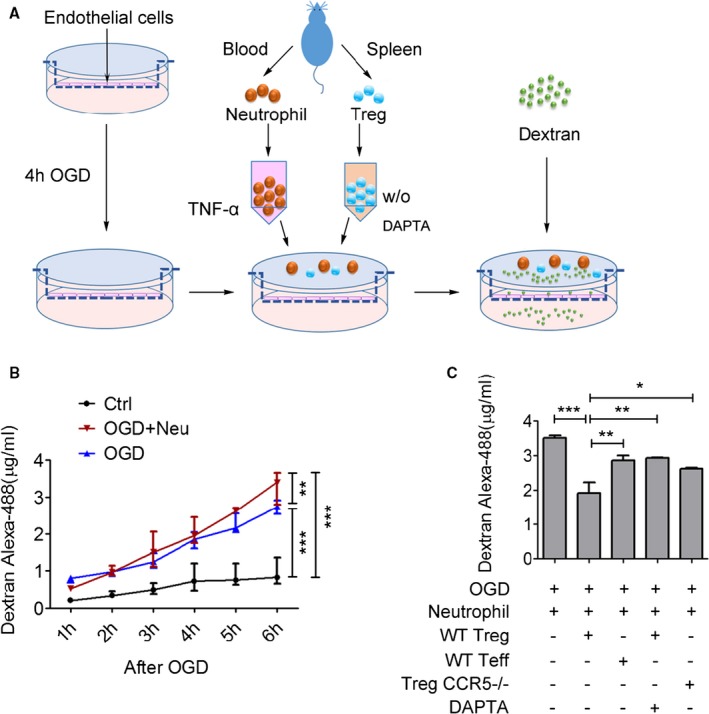Figure 7.

CCR5 is indispensable for Treg‐mediated protection against oxygen‐glucose deprivation (OGD)‐induced blood‐brain barrier (BBB) damage. A, Illustration of in vitro experimental design. A mouse endothelial cell monolayer was seeded on top of a membrane in the cell culture insert and subjected to OGD for 4 hours. After reoxygenation, isolated neutrophils with TNF‐α pretreatment (100 ng/mL) and preactivated Tregs were added into the insert. Then, 4.4‐kDa Dextran‐Alexa‐488 was loaded in the abluminal side. Paracellular permeability was determined by measuring the fluorescence intensity of the culture media in the lower chamber. n=6/group, data are from 2 repeats of independent experiments. B, Dextran‐Alexa‐488 leakage was measured 1 to 6 hours after OGD in different groups. C, BBB integrity was measured by quantifying fluorescence intensity in the culture medium in the lower chamber 6 hours after OGD. Pharmacological inhibition (with DAPTA 100 ng/mL) or genetic depletion of CCR5 abolished Treg‐mediated protection of BBB integrity after OGD. *P≤0.05, **P≤0.01, ***P≤0.001. CCR5 indicates C‐C chemokine receptor type 5; DAPTA, D‐ala‐peptide T‐amide; Treg, regulatory T cell.
